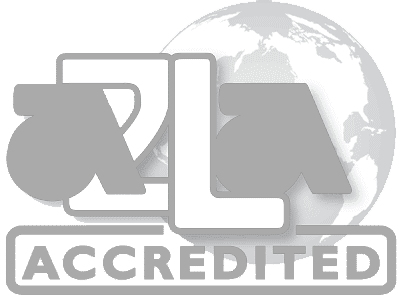What Is Salt Spray Testing?
Salt spray corrosion testing is a controlled way to measure how well a material or coating can resist corrosion. It’s used to predict how a part will hold up in real-world environments, especially those with high moisture and salt exposure.
The test doesn’t try to perfectly simulate nature. Instead, it creates a consistently aggressive environment that speeds up corrosion and exposes weaknesses. It helps manufacturers compare materials, verify coatings, and check how changes in process or supplier affect long-term durability.
At Omega Research, salt spray testing is one of the most requested services we provide. It’s especially common in industries where corrosion could lead to part failure, product recalls, or safety risks like aerospace.
What Happens During the Test
The most widely followed standard for this method is ASTM B117, which sets the conditions and process. Here’s how the test works:
- Salt Solution: A saltwater solution (ASTM D1193 type IV) is mixed and kept at a set concentration.
- Vapor Application: The solution is atomized into a fine mist and sprayed into a sealed chamber. The mist settles on the samples, which are mounted at a specific angle (typically 6, 15 or any specified angle) to mimic how they’d collect moisture in use.
- Test Duration: Samples stay in the chamber for a set amount of time, based on customer or process specification requirements, often tested from 1.5, 72, 96, 100, 168, 336 or in some cases up to 2000 hours.
- Evaluation: After exposure, we examine the parts for corrosion—rust, pitting, discoloration, and other surface damage. The extent of corrosion is compared against pass/fail criteria set by the customer, standard or specification.
Salt spray corrosion testing doesn’t guarantee how long something will last in service. But it does provide a consistent way to compare different materials, coatings, or treatments. It’s especially good at highlighting poor surface preparation, inconsistent plating, or coatings that look fine but fail under pressure.
Omega Research’s Salt Spray Corrosion Testing Capabilities
Omega uses calibrated equipment and standardized practices to deliver consistent and reliable results. Every solution is mixed in-house using (ASTM D1193 type IV) water and measured salt content. Chambers are regularly verified for temperature and humidity accuracy. Samples are mounted and spaced according to ASTM requirements to avoid cross-contamination or uneven exposure.
Reports are clear and structured for fast interpretation, with all criteria based on PO and specification requirements.
If results fall short of expectations, Omega’s lab team can assist in identifying potential causes, such as surface contamination, uneven coating thickness, or poor process controls.
When to Use Salt Spray Corrosion Testing
In aerospace, salt spray corrosion testing is essential for validating how materials and coatings perform under high-stakes, real-world conditions.
Aircraft components are often exposed to moisture, de-icing chemicals, salt-laden air, and wide temperature swings. That combination makes corrosion resistance essential, not just for performance, but for safety and compliance.
ASTM B117 testing helps aerospace engineers and manufacturers:
- Evaluate coatings on fasteners, brackets, landing gear components, and structural hardware
- Compare the performance of surface treatments like anodizing, cad plating, and powder coating
- Support documentation and traceability for military and commercial compliance requirements
Whether you’re proving a part for a new platform or comparing treatment vendors, ASTM B117 provides reliable data to guide decisions and protect lives.
Salt spray corrosion testing is a powerful tool when it’s done right. Omega gives you reliable answers and confidence in the durability of your parts.


